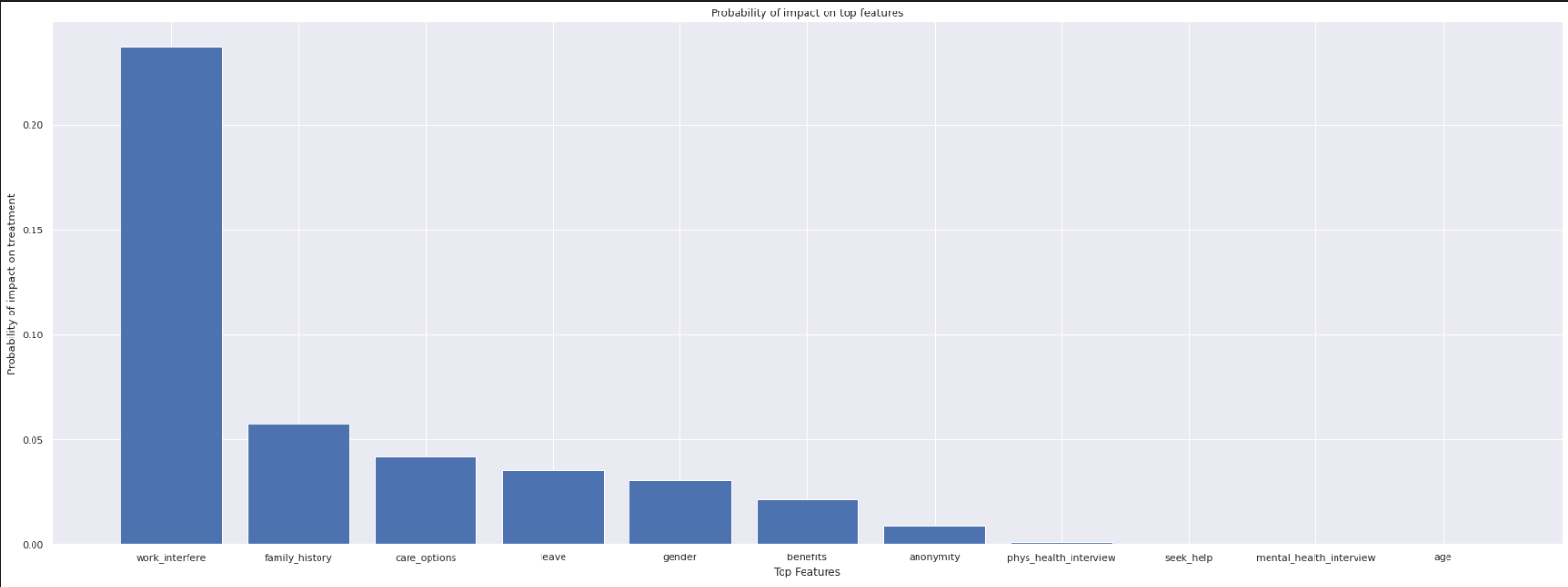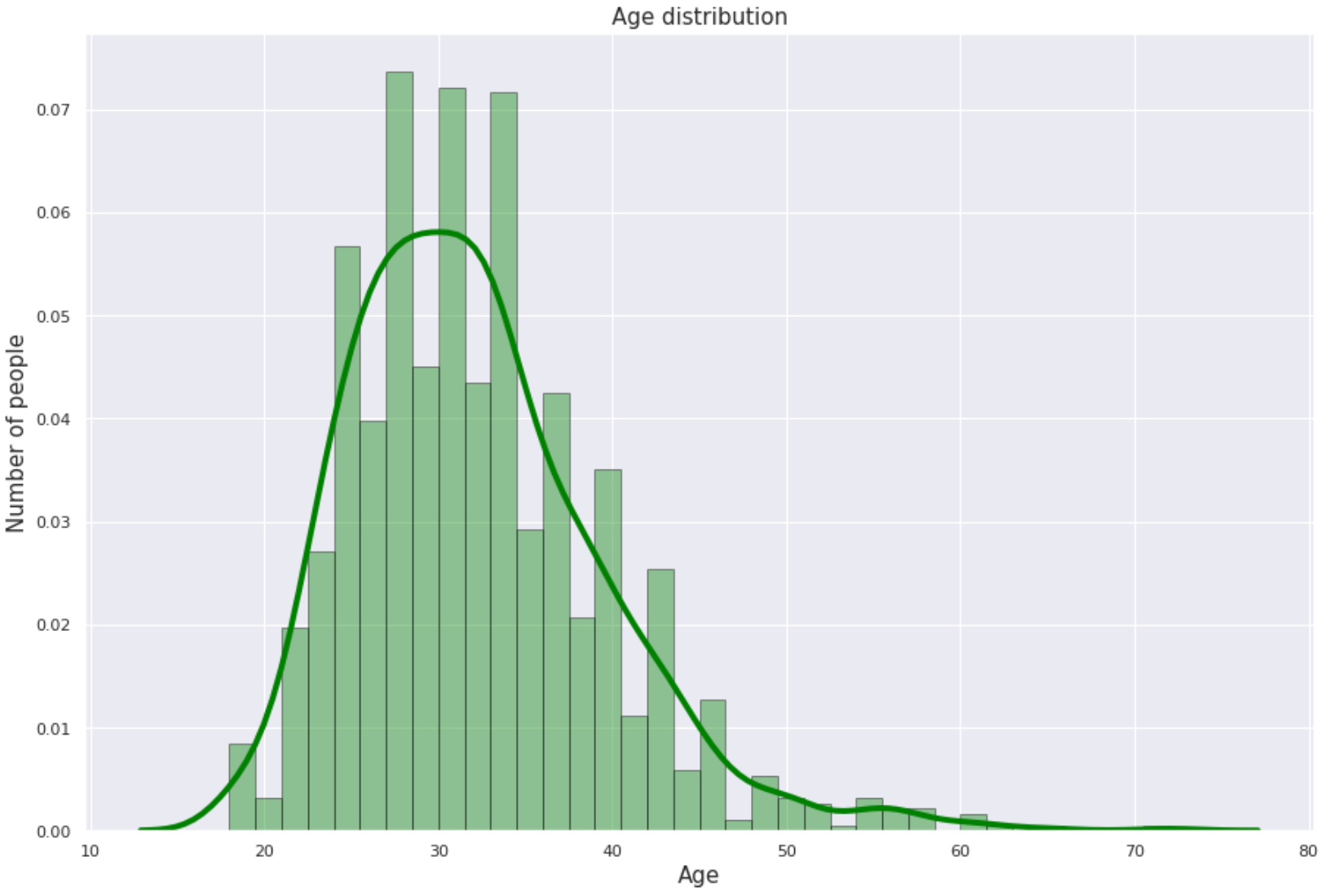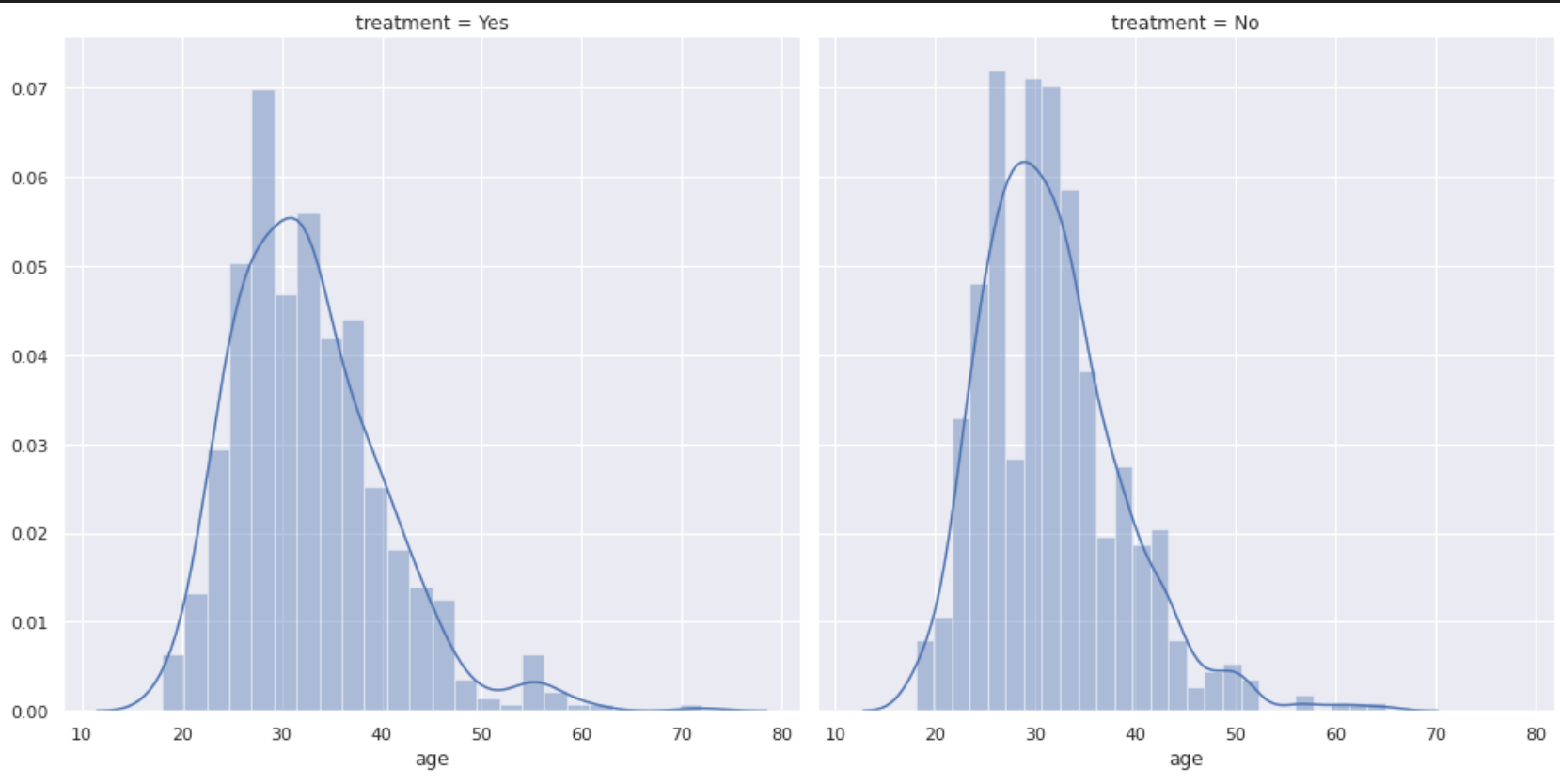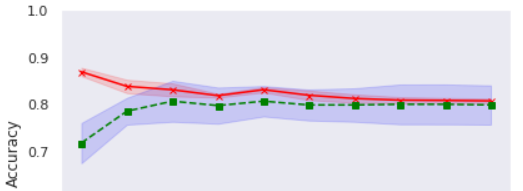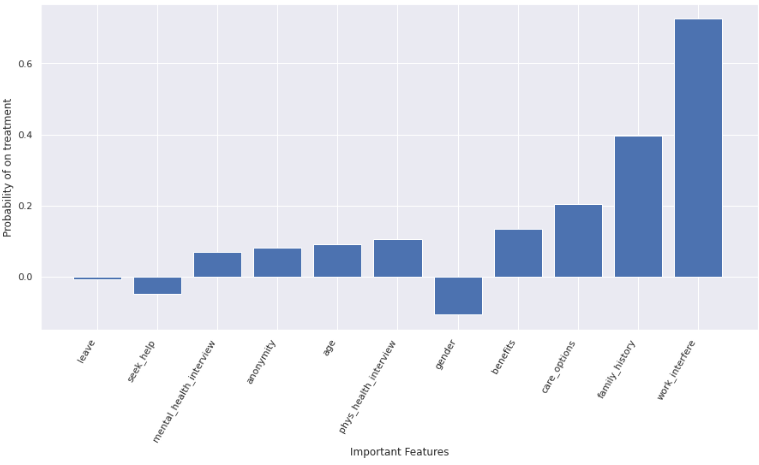A Logistic regression model written using Python with the help of Jupyter notebooks.
Based on the given data set from the conducted survey on mental health, does a person need treatment or not?
The motivation behind this question is to understand if individuals dealing with mental health challenges seek treatment or not. Some peple identify to have mental health challenges, but unfortunately they don't seek help or treatment. With this model, we can predict if the individual needs treatment or not, and use the result to better understand and assist individuals.
- Data cleaning and transformation
- Data visualization
- Probability of impact on top features:
- Age distribution graph:
- Age distribution with respect to treatment:
- Cross validation accuracy:
- Most impacting features:
The R2 score on the training set: 0.43795214301614077
The R2 score on the testing set: 0.3718454543740196
CV mean accuracy score: 0.798 +/- 0.042
GridSearchCV accuracy: 0.796 +/- 0.033
GridSearchCV best score: 0.7984084880636605
Best Parameter: 1.0
precision recall f1-score support
0 0.82 0.76 0.79 252
1 0.77 0.83 0.80 251
accuracy 0.80 503
macro avg 0.80 0.80 0.79 503
weighted avg 0.80 0.80 0.79 503
False Positive Rate: 0.25
Classification Accuracy: 0.8071570576540755
Classification Error: 0.19284294234592447
The top 4 features that affect whether a person should receive treatment or not is:
- Work Interference
- Family History
- Care Options
- Benefits
Age distribution is skewed toward people that are younger, so there is less data for people who are older than the 25-30 range.
There is chance that personal and religious beliefs might have affected this dataset, and resulted in some people not seek treatment despite facing challenges; thus there is a chance for the data to be biased or not accurate.
The data set was obtained from Kaggle, and there is no information on how the data was collected. By knowing this information, it can help us to better understand the data and the result.
Process the data from the comment section of the data set.
